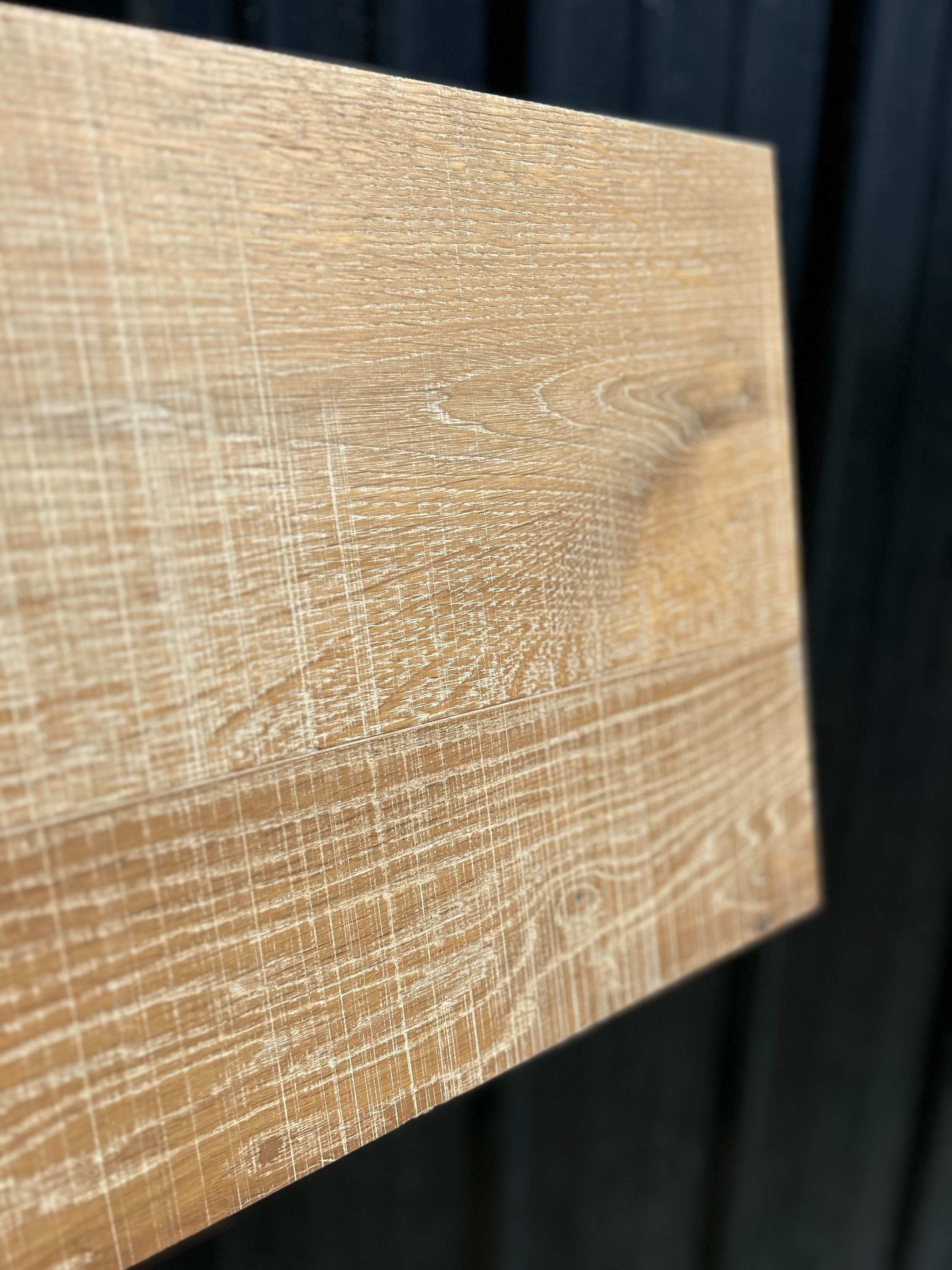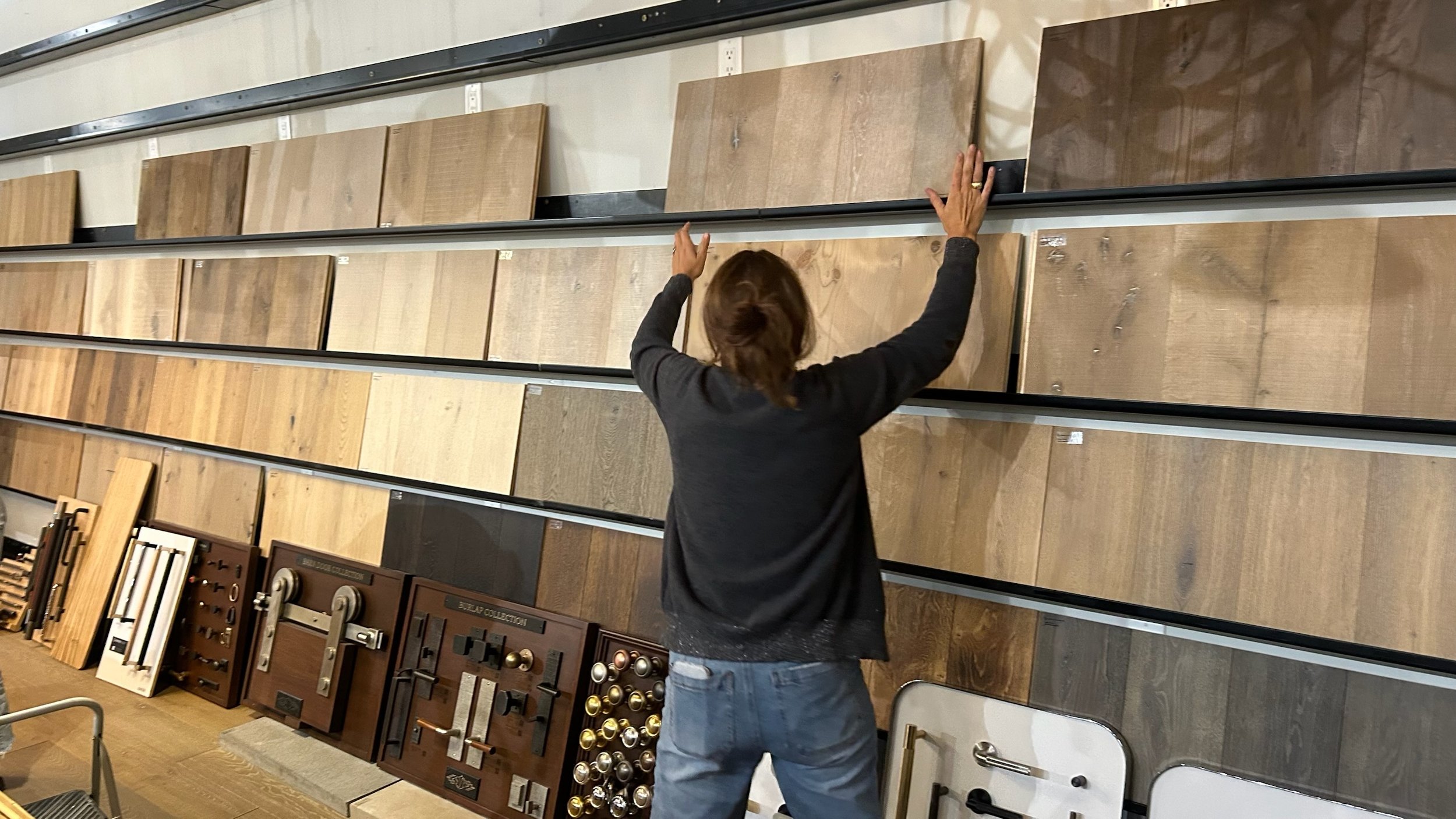Designers ask, we answer. Here is an Arrigoni floors Q&A.
Sometimes, you just have to ask the right questions. When we toured a few architecture firms in Jackson, Wyoming, we learned what people were thinking.
Q: Why is Arrigoni flooring a better choice over solid wood planks?
A: Arrigoni only offers a 3-ply platform that provides super stability, balancing the movement of the transverse layers (oak-spruce-oak). This let the top layer move naturally with relative humidity swings (as we do in the Rockies) without the negative side effects of cupping or checking. Other manufactures of engineered wood floors have a platform of plywood, that is super rigid and aligned in the same direction that when the RH swings that top layer of wood doesn’t have anywhere to go, except to cup and check. Many engineered flooring companies use baltic birch plywood at the core, which is rigid and has less “give” when these layers want to move naturally.
Solid wood planks are also more prone to these negative side effects with changes in temperature & humidity. The engineered construction of Arrigoni floors counterbalance this movement. It’s especially important when you’re looking at the wider plank offerings, which can be as wide as 19” in this brand.
Engineered wood flooring is also fine for use with in-floor heat.
Q: Solid wood floors can be sanded down time and time again. Doesn’t engineered wood have a limit to how many times it can be refinished?
A: Even with solid wood floors, there is a limit to how far it can be sanded down. That limit is the elevation of the tongue edge —you can only sand that far! Arrigoni has a wear layer thickness that is aligned with the tongue edge. So, they have the same depth of wear by that logic.
Q: My client is concerned with the durability of wood floors. Which Arrigoni floor finish is the most durable?
A: The first question we’ll ask is, “How do you plan to live in your house?” Will you have kids and dogs? Will you use the house mostly for entertaining and occasional use? Will there be constant, high traffic?
Scratching: A poly finish will scratch, and you can’t buff it out the way you can with oiled or soaped floors. Natural oil-finished floors can hide scratches much more effectively, as you simply add a bit of oil and buff it out.
Staining spills: A poly finish protects against this kind of wear. Oiled or soap-finished floors are more vulnerable to stains but can bounce back from most scratches.
Unfiltered sun exposure is an issue for any floor. An oil finish can more readily bring back color (to darken) on oiled floors.
Wood floors will always need maintenance, whether that is conditioning with an oil or soap finish or adding a full polyurethane finish later on. The Arrigoni website provides great maintenance resources and recommended products.
Q: Tell me about texture and flooring grades.
A: Wood flooring's texture options can add depth and dimension to your living space. This added texture can help mask imperfections that may occur over time due to daily wear and tear. Conversely, so-called “imperfections,” such as knots, can distract from what happens to your flooring.
Cross Brushed flooring finish
more rustic-look flooring with knots & natural variation





